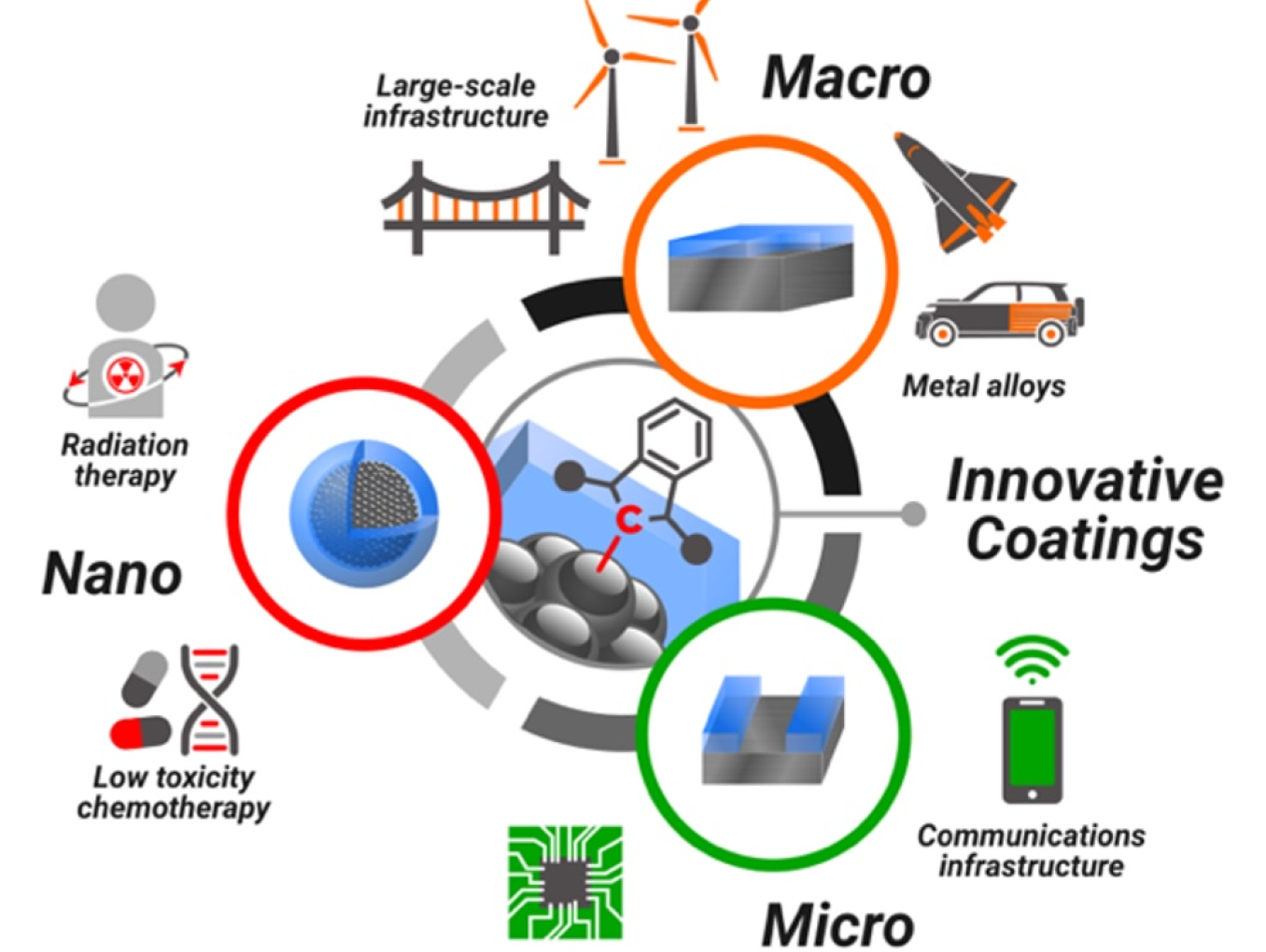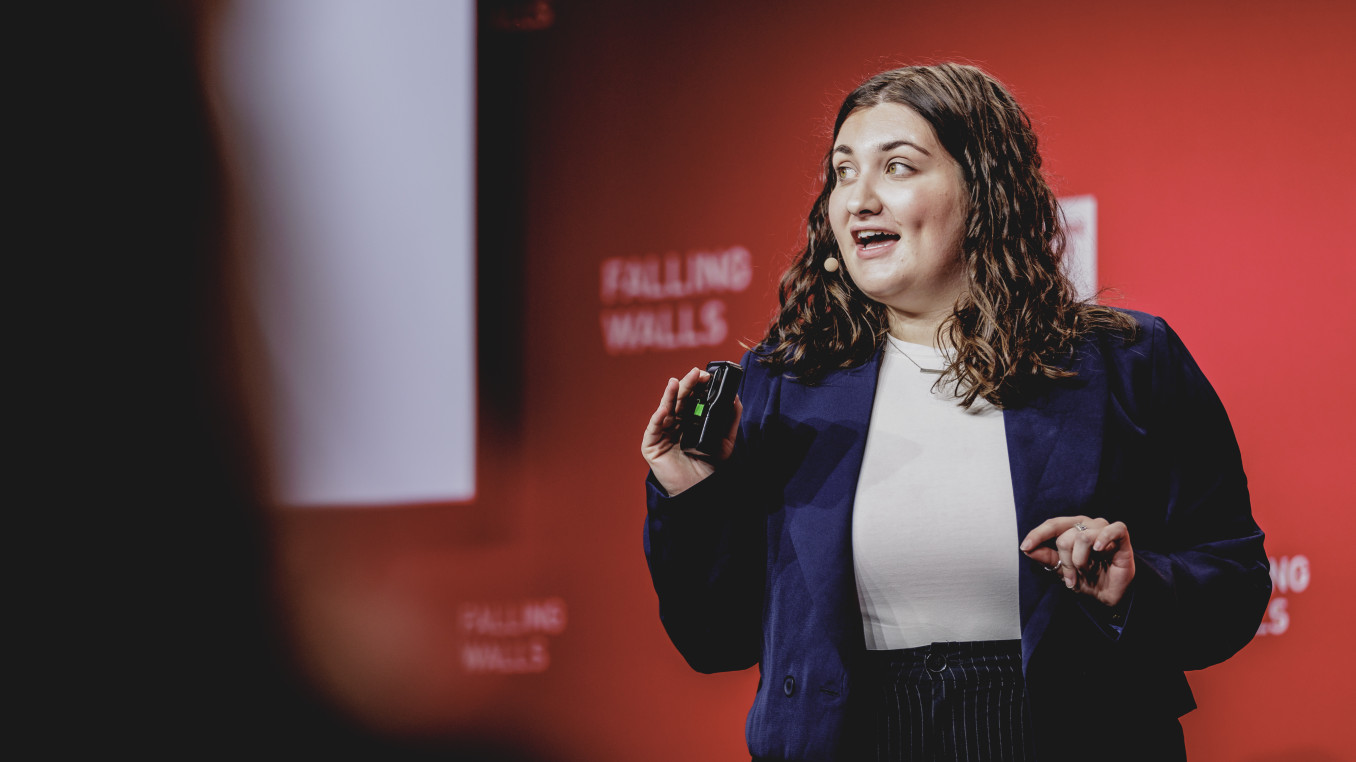Breaking the Wall of Metal Instability
Breaking the Wall of Metal Instability
Global Call 2025 Finalist Interview: Physical Sciences
Dr. Cathleen Crudden is a Tier 1 Canada Research Chair, a Distinguished Professor of Chemistry at Queen's and the Scientific Director of the Carbon to Metal Coating Institute (C2MCI), where she leads a global team developing transformative approaches to protect and functionalise metals from macro to nano scales. Crudden pioneered the use of N-heterocyclic carbene ligands as alternatives to thiols in self-assembled monolayer chemistry and nanocluster synthesis. This work has been called "game changing", "elegant" and "the new gold standard" by experts in the field.
Which wall does your research or project break?
The drive towards the lowest energy state is one of the fundamental principles of Nature. For metals, this represents a significant threat to some of the most important next-generation advances in science, engineering and medicine.
On earth, all metallic elements other than gold and platinum are unstable in the metallic form, preferring to exist as oxides. In the nano form, gold undergoes changes in shape as surface atoms rearrange and redistribute to reach minimum energy.
These processes severely compromise the properties of anything that relies on metals for structural integrity or electronic connectivity, and in next-generation nanomedicines, decomposition to bulk metal and loss of properties that require existence in nano-form. For metals used as structural components, oxidation leads to rust, material degradation and loss of structural integrity.
Metal instability can be addressed by reacting the metal surface with organic molecules. This approach is also critical for applications including biosensing and lateral flow tests, in addition to corrosion protection, semiconductor manufacturing, targeted chemotherapy and gene delivery. Currently, these applications use 1980's technology that is sensitive to thermal and oxidative degradation. Our lab has designed molecules that bind to metals via a carbon–metal bond providing unprecedented stability resulting in the first viable alternative for the protection and functionalisation of metal surfaces in 40 years.
Our robust organic coatings protect metals from oxygen exposure, provide stability to nanomedicines and provide the ability to bind biomarkers to metals in biosensors. This is resulting in transformative advances in medicine, engineering, semiconductor manufacturing and biosensing.
What is the main goal of your research or project?
The main goal of research in the Crudden group and at C2MCI is the development of the first well-defined carbon-based monolayers on metallic surfaces. The ability to interface organic (carbon-based) materials with metals provides a huge range of possibilities in biosensing, corrosion protection, electrocatalysis, semiconductor manufacturing, targeted chemotherapy and gene delivery because organic molecules on the surface can be modified to interact with or bind to biomolecules. Once modified, the metal surface can detect binding or release of biomolecules by, for example, changes in the electrical signal, or optical properties such as the surface plasmon resonance (SPR). SPR is responsible for the colour of metal nanoparticles, which changes as the size of the nanoparticle changes. These effects are used extensively in the sensing of DNA, employing surface functionalised gold nanoparticles.
What advice would you give to young scientists or students interested in pursuing a career in research, or to your younger self starting in science?
Two pieces of advice are most important in my opinion.
Firstly, it is important to consider not just what can you do as a researcher, but what should you do. Research project selection is incredibly challenging, but the largest rewards will come from projects that challenge assumptions and address large challenges rather than those that provide incremental gains. Since these projects are often riskier, it's important to design research programs that have low and high-risk components.
Secondly, developing projects that cross disciplines and bring unique expertise and insight from one discipline to another are most likely to be impactful. When developing such projects, don't hesitate to reach out to others and develop collaborations that help you achieve your goals. Working with other scientists is both exciting and rewarding, and provides an outstanding training environment for your students and junior researchers.
What inspired you to be in the profession you are today?
My high school chemistry teacher, which is why I think all countries should be increasing investment in education.
What impact does your research or project have on society?
Our work is providing precise methods to address cancer treatment, to improve the efficiency of semiconductor manufacturing and to provide longer lifetimes of metal infrastructure.


